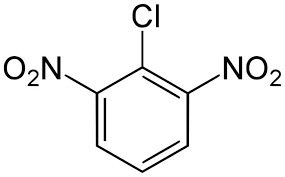Everything About Cepharanthine
Cepharanthine (CEP) has been use to treat a variety of acute and chronic illness in Japan since the 1950s, including leukopenia, snake bites, xerostomia, and alopecia. In the broad class of bisbenzylisoquinoline alkaloids, it is the sole medication license for human use.
Anti-oxidative, anti-inflammatory, immuno-regulatory, anti-cancer, anti-viral, and anti-parasitic activities are among the pharmacological qualities of this natural substance, which is mostly derived from the plant Stephania cephalantha Hayata.
Other names
Cepharanthine powder, sepharanthine.
What’s its basic purpose is?
CEP has a multifaceted method of action. The medication has a variety of intracellular and nuclear actions, including regulation of efflux pumps and membrane rigidification. CEP disrupts a number of metabolic pathways, most notably the AMP-activated protein kinase (AMPK) and NF-B signalling pathways. CEP’s anti-inflammatory properties are dependent on AMPK activation and NFB suppression.
Compound of cepharathine
Cepharanthine is a chemical derive from Stephania that has anti-inflammatory and anti-cancer properties. Stephania is a flowering plant genus in the Menispermaceae family that is native to eastern and southern Asia as well as Australia.
More than 600 alkaloids have been recover from Stephania species, with roughly 40 of them being identify from S. cephalantha extracts (Semwal et al., 2010)
. The chemical content of extracts varies according on the harvest period and locale.
CEP is discover in greater abundance in the tubers of the plant than in the roots, as well as in the leaves and seeds of the farmed plant in Japan (2014).
Major Benefits for cancer patients
Cepharanthine, a biscoclaurine alkaloid discovered from the roots of Stephania cephalantha Hayata, has been shown to have anticancer effect in a variety of cancers, however the mechanisms are still unknown.
Hedgehog and Wnt pathway transcriptional responses are frequently related with specific human malignancies, including liver cancer.
To see if these signaling pathways are implicate in cepharanthine’s pharmacological activity
Researchers looked at Hedgehog and Wnt signaling in liver cancer mice treated with cepharanthine hydrochloride (CH), a semisynthetic cepharanthine derivative.
The pharmacological impact of CH was evaluate using MTT cytotoxic, scratch, Transwell, colony formation, and flow cytometry assays. Cellular growth and invasion were inhibit, whereas apoptosis was promote.
Anti-inflammatory
The widespread use of S. cephalantha preparations in traditional medicine for the treatment of rheumatism,
lumbago, nephritis edoema, diarrhoea, and other inflammatory illnesses is due to CEP’s anti-inflammatory properties.
CEP’s ability to minimise oxidant generation leads to the suppression of the transcription factor NFB, which is a powerful regulator of inflammatory molecules.
CEP inhibits the expression of NFB. CEP’s anti-inflammatory properties can be beneficial in a number of disease circumstances. CEP’s ability to reduce inflammation and oxidation, for example, protects against muscle and kidney damage caused by limb ischemia/reperfusion.
Some countries don’t use it
It’s worth noting that the use of S. cepharantha extracts is prohibit in several countries, including France, due to the risk of cross-contamination with other hazardous plants with similar Chinese names (particularly Aristolochia funghi, which contains nephrotoxic aristolochic acids) (2010).
Conclusion:
The historical discovery and evolution of CEP are document in this review, as are the essential mediators involve in its mode of action. CEP’s past, present, and future are summarize. This research also recommends new ways to broaden the clinical applications of an ancient Japanese medication that is well tolerate.
Wanna give us inquiry regarding Cepharanthine click Here.
Learn more about our Products.




